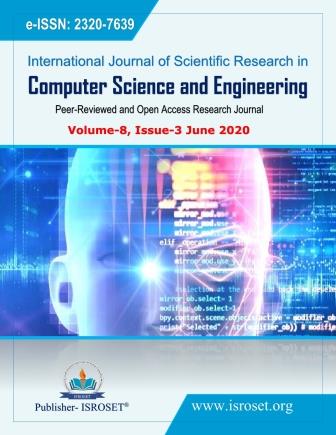Modeling of Heterogeneous WLAN Based on Traffic Application
Keywords:
Load, Protocol, Signal Sharing, Throughput, WLANAbstract
inherently, the negative effect of parameters of interest like: low bit rate, speed loss, packet drop, bandwidth congestion, and decrease in signal strength are latent in nature. These obviously affect the behavioral attitude of a network system and those affected areas are to be monitored and therefore be reduced even though, these factors may not be completely eliminated. No doubt that the performance of the wireless local area network (WLAN) technology has been greatly affect by these retarded factors. Options of total elimination of these factors are almost impossible, but then, this study will greatly reveal the negative effects, posed by these undesirable factors. In the light of these, three different WLAN technology scenarios were modeled and simulated and parameters of concern include: delay (sec), load (bits/sec), and throughput (bits/sec). The file transfer protocol (FTP) as the traffic application was used to administer the effect of the stated factors on the each WLAN of different scenarios. Also, the results obtained showed: more delay, minimum throughput, and minimum load occurred in a scenario with the highest number of nodes. Besides, if factors like: distance, interference, signal sharing, and other physical obstructions between the devices were considered, better results would be obtained.
References
K. Ram, L. Vijay, ?Simulation and Analysis of Wireless Local Area Network Using Opnet,? Engineering Sciences International Research Journal, Vol. 2, Issue. 1, pp. 101-104, 2014.
O. O. Elechi, ?Design and Simulation of Wireless Local Area Network for Administrative Office Using OPNET Network Simulator: A Practical Approach,? Information and Knowledge Management, Vol. 4, Issue.10, pp 27-33, 2014.
U. K. Okpeki, J. O. Egwaile, and F. Edeko, ?Performance and Comparative Analysis of Wired and Wireless Communication Systems Using Local Area Network Based on IEEE 802.3 And IEEE 802.11,? Journal of Applied Sciences and Environmental Management, Vol. 22, Issue 11, pp.1727?1731, 2018.
V. Rajan, S. S. Ravinder, and S. S. Gurpreet, ?OPNET Based Wireless LAN Performance Improvisation,? International Journal of Computer Applications, Vol. 48, Issue. 1, pp.0975 ? 8887. 2012.
R. Krishan, and V. Laxmi, ?Simulation and Analysis of Wireless Local Area Network Using OPNET,? Engineering Sciences International Research Journal, Vol. 2, Issue.1, pp 101-104, 2014.
H. G. Sameh, and R. A. Abedel, ?Wireless Network Performance Optimization Using Model,? Information Technology Journal, Vol. 5, Issue. 1, pp.18-24. 2006.
O. M. Olanrewaju, ?The Modeling and Simulation of Wireless Campus Network,? International Journal of Computer Science and Information Security (IJCSIS), Vol. 16, Issue. 9, pp 68-78, 2018.
A. S. Islam, and M. T. A. Ghassan, ?Comparative Study of Wireless LAN using OPNET and NS-2,? In the Proceedings of the 2016 Conference of Basic Sciences and Engineering Studies (SGCAC), pp 196-200, 2016
R. K. Bansal, V. Gupta, and R. Malhotra, ?Performance Analysis of Wired and Wireless LAN Using Soft Computing Techniques- A Review,? Global Journal of Computer Science and Technology, Vol. 10, Issue. 8, pp 67-71, 2010.
R. Vohra, R. S. Sawhney, and G. S. Saini, ?OPNET Based Wireless LAN Performance Improvisation?, International Journal of Computer Applications, Vol. 48, Issue. 1, pp 975 ? 8887, 2012.
S. H. Ghwanmeh, and A. R. Al-Zoubidi, ?Wireless Network Performance Optimization Using OPNET Modeler,? Information Technology Journal, Vol. 5, Issue. 1, pp 18 - 24, 2006.
A. H. Ali, A. N. Abbas, and M. H. Hassan, ?Performance Evaluation of IEEE802.11g WLANs Using OPNET Modeler,? American Journal of Engineering Research (AJER), Vol. 2, Issue. 12, pp-09-15, 2013.
J. Wei, ?OPNET-Based WLAN Modeling, and its Performance Testing,? Chemical Engineering Transactions, Vol. 51, Issue. 2283-9216, pp 361-366, 2016.
Downloads
Published
How to Cite
Issue
Section
License

This work is licensed under a Creative Commons Attribution 4.0 International License.
Authors contributing to this journal agree to publish their articles under the Creative Commons Attribution 4.0 International License, allowing third parties to share their work (copy, distribute, transmit) and to adapt it, under the condition that the authors are given credit and that in the event of reuse or distribution, the terms of this license are made clear.







